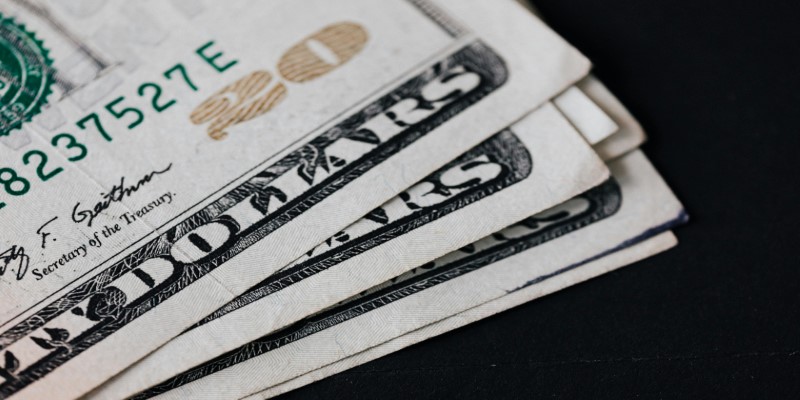How Many Bank Accounts Should I Have? - A Simple Guide
Susan Kelly
Nov 28, 2023
Having several savings accounts can be a good idea, but it's essential to make sure you can manage them effectively. You can have as many as you want, but it's crucial to consider your ability to handle them. It's also wise to have various investments that match your savings goals. When choosing a savings account, look for key features that suit your needs. In this article, we will explain this tricky question; How Many Bank Accounts Should You Have? Let’s get started!
Why You Should Have Multiple Bank Accounts?

It could make sense for you to create numerous bank accounts for a number of reasons, including the following:
Setting a Budget
You can keep your savings and spending money separate by using different accounts. Having separate accounts for each category helps you easily track your spending, making it simpler to see if you need to adjust or stick to your budget. It also makes it more convenient to keep an eye on how you're progressing towards your savings goals.
Obtaining Benefits and Characteristics
Banks offer fantastic features and benefits nowadays, a big improvement. While many accounts serve various purposes, having multiple bank accounts can still offer valuable advantages. A checking account allows bill payments, provides a checkbook, and ATM access. You can boost your savings goals by earning interest on savings accounts, and accounts like money market, CDs, and high-yield savings can offer higher annual yields (APYs).
Bank Incentives
Banks often use financial bonuses to attract new customers. To get these incentives, you typically need to open a new account and meet specific conditions, like setting up a direct deposit, maintaining a certain balance, and completing other transactional requirements.
How Many Accounts Should You Have with Banks?
While there's no one-size-fits-all answer, it's generally a good idea to have at least two accounts: a checking account and a savings account. This gives you a regular account for bills and expenses and a separate savings account.
But wait, there's more to the story! Checking and savings accounts offer various features and services. Other types of accounts might provide higher interest rates or more specialized features to consider.
Checking Accounts
A bank account is like a hub for everyday expenses—money in, money out. It's designed for regular transactions, like putting money in and taking it out. Checking accounts are handy for paying bills, shopping online, and getting quick cash.
Having at least one checking account is usually a good move, but depending on your situation, you might find it useful to have more. For example, First Citizen Bank offers two levels of free checking account upgrades, giving you extra features if you want to earn interest on your everyday spending.
Quontic Bank offers checking accounts with cash back or high-yield interest. Keeping one account for everyday use is smart, but having multiple checking accounts lets you take advantage of these special offers.
You can split your money into accounts for bills and fun spending. Creating a business savings account is a great way to keep money separate for small business ventures or side projects. Parents, listen up: Chase and some other banks allow you to set up checking accounts for your kids and teenagers.
Saving Accounts
Having multiple savings accounts can be really beneficial. By having different accounts, you can allocate your funds to specific goals. It's easier to keep track of which money is earmarked for which goal when you keep your savings separate, though you could put them all in one pot and try to remember. Having several savings accounts is excellent for:
- Creating a contingency reserve.
- Aims for short-term savings.
- Targets for long-term savings.
The interest rate on your local bank's savings account might be lower than the national average. You can boost your savings by pairing your regular savings account with a high-yield savings account from an online bank. Many online banks offer competitive Annual Percentage Yields (APYs) for high-yield savings accounts, especially if you're comfortable handling you’re banking on a computer or smartphone.
Tips to Manage Multiple Accounts

Following are some of the tips to manage multiple accounts at a time with ease.
Remain Arranged
Juggling multiple accounts can be a bit tricky, and if you're not careful, you might mix them up during transactions. When making purchases or transferring money, make sure you're using the right account or debit card to avoid any mix-ups. Stay sharp!
Put Saving Money First
Invest in your future by setting aside money for both short- and long-term life goals, regardless of how many savings accounts you have. Build a safety net with a contingency account that covers three to six months' worth of living costs to protect yourself. If you prefer automatic savings on a weekly, monthly, or yearly basis, consider accounts with built-in autonomous savings features. It's like putting your savings on autopilot!
Be Mindful of the Fees
Some banks charge monthly fees for managing your account. Look for bank accounts that either offer reasonable ways to avoid these monthly costs or, even better, have no fees at all. Save your money for things that matter!
Choose the Number of Banks
Opening accounts at multiple banks is perfectly fine, especially if you find an account that suits you better or if a particular financial institution doesn't offer what you need. Just keep in mind that using a different bank means you'll need to get and use a new banking app and remember a new account login. It's all about finding the right fit for you!
The Bottom Line!
Savings accounts are great for reaching financial goals and keeping your money safe. Creating separate savings accounts for each goal can help you track your progress. To manage multiple savings accounts, get to know the Federal Deposit Insurance Corporation rules and understand how interest rates and fees work for each type of account.
Pay attention to the terms and conditions to take advantage of higher interest rates and avoid falling below the minimum balance requirement. To understand the pros and cons of having multiple savings accounts based on your situation, consider talking to a qualified financial counsellor. They can provide valuable insights!







